Part 1b - The Living with Nature Center Library
Part 1c - Rock Collection: Art, Study and HobbyPart 1d - Lectures, Workshops and ResearchesPart 1e - Botanical Garden and Ecological SanctuaryPart 1f - Icons in the Garden

2. San Vicente Botanical Garden – living gene bank, shrine, outdoor classroom.
3. Living with Nature (Center), advocacy, hands-on, on-site learning
4. Community-based (visits, tours, workshops, research, practicum)
5. Refuge (respite, retirement, recuperation, balikbayan, childhood experience)
6. EcoSanctuary - Wildlife habitat, orchard, open field, local ecosystems
7. Natural for healthy and happy living (food, air, herbals, pets, sense of freedom)
8. Family museum (library, archive, souvenirs, achievements, paraphernalia)
9. “The Morning After Syndrome” - preparedness for the worst upheaval (COVID-19)
10. Exodus from the City (reversal from traffic, congestion, high cost of living)
11. Right brain shift (creativity, hobbies, nature-friendly)
12. Integrated and holistic (The Humanities, back-to-basics, skills development)
13. You are not alone (“So far yet so near,” the world at the living room)
14. Ecological prayer (Love God through Nature, Nature is God’s greatest gift)
15. Don’t be a victim of Instant Syndrome (DiY, home garden, cookbook)
16. Save, save from impulse buying, planned obsolescence, ostentatious living.
17. Be simple and practical (countryside living, bayanihan, kamag-anak)
18. The golden years of life (It’s not too late, you are missing life itself)
19. Yes, you can paint, cook, build your home, do the things you dreamed of.
20. Search for the meaning of life (Learn from Victor Frankl, Schweitzer, Rizal)
Globally linked on the Internet avrotor.blogspot.com in 5000 articles to date. Search topic, download, print for your educational use in your school, community, and organization. Linked with 12 books written by AV Rotor, Bannawag magazine, (Okeyka Apong), other websites. Welcome to the Living with Nature Center and San Vicente Botanical Garden. Contact - 09954672990
Part 3 - Endearing Nature-Human Relationship in Paintings
"A place for everything, and everything in its place."My father would remind me to keep organized then;In nature, essential or not, everything has a place,In unity and harmony with a touch of heaven.
Why do trees lean altogether like bandwagon,Yet the stream flows the other way around?Why do leaves fall, the fields green in monsoon?
Scene too small, too crowded, to know all.

Art Workshop for Children before a wall mural by the author in his family
residence (Living with Nature Center) in San Vicente Ilocos Sur, 2017,
- Does Humanities bring out awareness of culture and history as well?
- To what extent does it influence ones perception about the environment, society and the changing times?
- Is the syllabus of the course sufficient in bridging art’s traditional history and conventional styles with one that is progressive and liberal in keeping up with the call of the times?
- If this is so, are the students prepared to critique art, not so much for art’s sake, but for its relevance and application in their lives?
IT (Information Technology) 31 (72%)HRM (Hotel and Restaurant Management) 8 (19%)MC (Mass Communication) 3 (7%)Biology 1 (2%)

Philippine Literature Today: A Travelogue Approach takes us into a journey along the path on which literature has come a long way, evolving with richer diversity in so short a time that generations, old and new alike, are brought together closer through the beauty and bounty of the subject of literature.
· Literature has come a long way from Victor Hugo’s Les Misérables to Jose Rizal’s Noli Me Tangere to Martin Luther’s King’s I Have a Dream;
· from Shakespeare’s Romeo and Juliet to Francisco Balagtas’ Florante at Laura to Spielberg’s Jurassic Park;
· Aesop’s Fables and Grimm Brothers’ Cinderella to Severino Reyes’ Mga Kuwento ni Lola Basyang to Disneyland’s animated characters.
· Ben Jonson’s Song to Celia to Leona Florentino’s Rukruknoy to Telenobela;
· Homer’s Iliad and Odyssey to Pedro Bucaneg’s Biag ni Lam-ang to Flash Gordon and Starwars; and
· from Nostrodamus: The Man Who Saw Tomorrow to Alvin Toffler’s Future Shock to Higg’s Boson: Link of Energy and Matter.
 Four great Filipinos are acclaimed vanguards of Philippine Literature. The cover of the book, conceptualized and made by artist Leo Carlo R Rotor, depicts the theme of the book - travelogue in literature with these heroes.
Four great Filipinos are acclaimed vanguards of Philippine Literature. The cover of the book, conceptualized and made by artist Leo Carlo R Rotor, depicts the theme of the book - travelogue in literature with these heroes.· Jose Rizal on politico-socio-cultural subjects, including ecological, Rizal being an environmentalist while in exile in Dapitan, Misamis Oriental, Mindanao;
· Francisco Baltazar or Balagtas on drama and performing arts in general, fiction novels and plays, evolving into stage show and cinema;
· Severino Reyes or Lola Basyang on mythology, children’s stories, komiks, and a wealth of cartoons and other animations; and
· Leona Florentino, the Philippines’ Elizabeth Browning, Ella Wilcox, Emily Bronte et al, epitomizes the enduring classical literature.
-------------------------------------------------------------
Philippine Literature – A Travelogue Approach is a sequel to Humanities Today – An Experiential Approach by the same authors and publisher, literature being a major field of humanities, and that the teaching-learning approach adopted in both books is experiential and exploratory, and largely, on-site and hands-on. It is recommended that the latter be used as a reference in this subject.
-------------------------------------------------------------
These great Filipinos contributed immensely to the making of a distinct kind of literature we proudly call our own. It is linked to a larger realm - the literature of the world, which embodies universal principles and values.
Literature is a conservatory of language and culture, and of the humanities. It is a repository of folk wisdom, beliefs and superstitions. It keeps alive the quaintness of social life. It is a treasure of any society.
But literature first of all, must be a "living" one. It builds ideas and thoughts. It strengthens character and instills discipline. To do so it must be understood by the people down to the grassroots – not for entertainment alone but for enlightenment and realization of life’s meaning. Literature indeed is, for and by the people.
.Literature is a builder of leaders - literary greats are leaders with the power of the pen, power of conviction with words, charisma akin to the “singer, not the song.” Or the “the master behind the masterpiece,” to whose name his work is named after. (Shakespearean, Aristotelian, Darwinian). Leaders are looked up to, in building other leaders as well, who continue the task, to carry on the torch and “guide the nation and people through the night ‘til dawn,” in the epilogue of Rizal’s great works.
· Literature is tested by time and change. It is a refuge to the lost, a way back home for a Prodigal Son. A lighthouse in a stormy sea, birds signaling an island must be near somewhere. It is a breeze in doldrums.
Literature in changing times
We are being swept by the currents of geometric progress. We face a deluge of information that makes separating the grains from the chaff more difficult, so to speak. And how much more picking only the grains we need? Thus we are being led deeper into a maze that takes us farther in our quest for truth.
With the multi-tasks magic palm-size electronic gadget we call in different names like tablet, i-Pod, and smart phone, the world is now virtually in our hand. Never have we been serious in analyzing William Blake’s Auguries of Innocence, which in part is quoted as follows:
"To see the world in a grain of sand.And a heaven a wild flower;Hold infinity in the palm of your hand ,And eternity in an hour."
It is a world shrunk in time and space in one’s lifetime and generation – because technology and affluence have overtaken us at the pace we are used to.
Fortunately we still trace Philosophy back to Socrates, idealism to Plato, Naturalism to Aristotle. We precious independence from colonial rule in Rizal, emancipation of slavery in Lincoln, militancy in women in Tandang Sora and Gabriela Silang, and constitutional reform in the trilogy of the French Revolution - Egalite’, Liberte’ Fraternite’.
Around a bonfire we listen to Aesop, Homer, Scheherazade, Grimm brothers, come alive in vernacular language and costumes. The lament in Shakespearean tragedies, lilting laughter of Jose flying a kite (Saranggola in Pepe), the lyrical melodious pleading of Kudiman (Filipino love song), the dirge of Pasyon (Passion of Christ) – all these take us to a travelogue back to our roots, to the keepers of that Temple which Rizal, Balagtas, Florentino, Reyes, et al built and guarded dutifully and zealously.
Literature and Media
But in today’s capitalism fueled by consumerism, we find the art of literature besieged in a free market where profit is generally the lure and rule. Literature is trapped in this huge market, and if it holds on merely to its past – or just drift aimlessly, then, we may lose its essence, and therefore its treasure.
We must be vigilant to the preservation of literature as the fine art, sensitive to ethics and morality as guide to human actions and behavior, against such issues as pornography, euthanasia, graft and corruption, and issues on the environment that threaten to destroy our living planet. We must regard literature as a powerful tool in preventing war and keeping lasting peace and harmony in society, in keeping faith in our institutions, and our relationship with our Creator, fellowmen, and Nature. It is a travelogue toward the redemption of values and preserving it, indeed a journey on a very rough road.
Commercialization of media has many undesirable consequences to literature, shrouding our thinking and imagination, with the border separating fantasy and reality being eroded. Many creatures are projected with untrue images; while we protect the endangered species, media is making them enemies of mankind – Anaconda, King Kong, The Birds, Jaws rake profits generated by fear, animosity and curiosity while leaving false impression especially to the young. Whole forests, mountains and lakes are destroyed to flush out enemies and bad spirits, or to appease a god of wrath.
But there are, in fact, more positive contributions of literature and media in this aspect in the likes of Black Beauty, Babes, Fly Away Home, Free Willy that elevate human consciousness towards understanding animals and other creatures often rising to the level of moralism in Aesop’s fable, Kipling’s Jungle Book and George Orwell’s Animal Farm.
But the role of each one in this analogy is not simple and clear cut. Their shared domain is a complex one that needs a definition of their boundaries. But the other school of thought is more of establishing a synergistic relationship which means that more can be gained through cooperation and unity with humanity as the ultimate beneficiary.
This is crucial for the fact that millions of people are bypassed by technology, education, healthcare and other basic necessities for which reason riches particularly generated by computer technology are now channeled philanthropically to the underprivileged.
If literature and media are to support this movement, what could be their roles, and how can they join hands to reach the masses? We are gladdened, at the same time challenged, by a number of developments such as the following:
· Popularization of literature to the understanding of the people. Noli the Musical, translated Rizal’s masterpiece into entertainment education for the TV and cinema. In like manner Oliver Twist’s musical version Oliver, Oliver reached as many people as those who have read the novel.
· The Great Books, among them Victor Hugo’s Les Miserables and Leo Tolstoy’s War and Peace now have popular versions for bigger audiences, following the footsteps of The Bible.
· Publishing whether in print or electronic is no longer a business monopoly, it can be done in home workshops, so with documentaries and movies. With the computer one can be an author, publisher, critic, marketer, rolled in one.
· The combination of literary and technical forms, with today’s technology, is bringing into our homes dramas of the living world, reenactment of historical events, stories of the different cultures, and many others. This made National Geographic, Discovery, History and other TV series, very popular.
· Scientific discoveries have found literature a tool for dissemination outside of the conventions of science. Titanic, although more fiction than fact could not have been made without the discovery of the ship’s wreckage at the bottom of the sea. An Inconvenient Truth, a documentary film won for Al Gore, the expert on environment and author, the prestigious Academy Award.
· There are animations and cartoons in print or on screen that are gaining merits to be classified as literature. Finding Nemo, Ice Age, Land Before Time, Disney, Barney and Friends and Jim Jam series are among the most popular of this kind. There are homilies, speeches, conference proceedings, diaries which have literary qualities to be classified as pieces of literature.
The unquantifiable volume of Information has generated waste, in fact pollution – infollution. This is exacerbated by social networking, and continued increase of wireless technology tools and users.
· Literacy rate may have increased but computer literacy is but “coded literacy” which is not true knowledge. This leads us to the question what constitute the genuineness of a work.
· Neophytes and experts now play the same game on the same playground with multimedia. Exclusivity of clubs, imprimatur of quality granted by select groups, stringent criteria of evaluation, and the like will have to undergo scrutiny and eventual innovation.
But we have to look back now and then to that temple built by four great Filipinos and their kind. The flickering light through its window gives us courage and comfort when we see no star in the sky. Dawn is a child coming. ~
Literature is the mouthpiece of the people that carries their stories alive and beautiful from generation to generation. It is the people’s collective masterpiece, their imprimatur. Literature is agent of change, never passive, never submissive; it is a pathfinder, a sailing vessel that brings in “the promise of the tides.”
The artist’s idea is in seeing Rizal alive today through his ideals bearing fruits in a free world, Lola Basyang keeping children happy like in his time with mythology’s eternal magic, Balagtas in a new Renaissance in cinemas and the Internet, and Leona Florentino, the muse of Philippine literature as the keeper of the “literary flame.”
- Leo Carlo Rojas Rotor, BSFA-ID (UST), MIT (AdMU),
--------------------------
1. Three words for a book title, Philippine Literature Today,The essence of three elements: space, subject and time;Yet subjective and elusive to the critical eye and mindBut courageous at the frontline, gentle over our clime.
2. What is literature to the old is also that to the young;Bridge of generations, continuum of race and culture;Heroes of old, heroes of new, and those awaiting, too,Living book, not archive or litany, to love and treasure.
3. Dawn the prelude to sunrise, brings in a new sentinel,New to the learned, to the unlearned, to the new born,Sunset not the end of day and coming peace of night;But rage, for to settle down is sin when the flag is torn.
4. Wonder the sun rising late and dying young in smog;Wonder a high rise cast its shadow to hide a shanty;Wonder ostentatious shows, courtesy of the needy;Wonder literature thriving on romantic dichotomy.
5. Icons, masters, the pedestal too crowded for a few;Names branded by fraternity, laurel or olive wreath;Vanity and fancy, in language beautiful in the clouds,Cordon sanitaire that wisdom is barred to bequeath.
6. While the world moves on by leaps from a small step,In quantum of knowledge beyond the brain can hold;Cyberspace the blackboard that was, now unlimited,Makes the old torch a lightning bolt its power untold.
7. Literature its profile from Baby TV to Disney to HBO
Its domain epics and tales to history, science and ad;
Access on the palm and wrist, biometrics and robotics;
Quo vadis literatura? The canons are now old and sad.
8. Talk about Black Death, talk about COVID, both dreaded;
Angels and astronauts; about Noah’s flood and Yolanda;
Tenants in the field and condominiums they don’t own;
Man-made islands and deserts, the mall and talipapa.
9. No part truly speaks of the whole, comprehensive it may,
For literature defies science; unlike happiness multiplies
When divided in the magic of synergy and imagination
Above reason like rainbow that often comes in disguise.
10. Pathfinders at the heels of the world’s men of letters,
Universal truth in Rizal, genius put to test in martyrdom;
Reyes the Lola Basyang, relived fairies and the dwarfs
By the hearth and tamed the giants in faraway kingdom.
11. The doyen, Leona in Philippine poetry past, preserved
The endangered classics of the west tuned in vernacular;
Balagtas brought on stage Shakespearean drama alive;
Four pillars stand over our literature like shining star.
12. To our shores came Aesop, Homer, the Grimm brothers,
Stories from far north and south, and across the globe,
In times war and peace, in colonial days and in liberty;
An invisible hand guided our destiny from the cold.
13. What now from millennia past, in postmodern age -
The atom a ticking bomb, the life’s secret in DNA code?
The world has shrunk into a gadget, now owned by all
At fingertip’s command, at anytime, by young and old.
14. The second Big Bang that in cyberspace never sleeps,Rousing and prodding, intruding, unyielding to our right,Where computer and literature on busy feet moving,Like a river of no return, rushing aimlessly in the night.
15. Humbly this book presents a less trodden way, perhaps nil;Footsteps it lays ahead on a long journey on the horizonBy pioneers unknown, untested, theirs not of the gloryBut courage and joy beating a path to a promising zone. ~
Lesson on former Paaralang Bayan sa Himpapawid (People's School-on-Air) with Ms Melly C Tenorio. 738 DZRB AM Band, 8 to 9 evening class, Monday to Friday

There are two fields of cryptobiology, one concerning animals (cyptozoology) and the other, plants (cryptobotany). The former took off with the discovery of strange creatures like the Coelacanth fish thought to have become extinct millions of years ago. On the other hand, the search of legendary and fiction characters like Loch Ness, Bigfoot, and the Abominable Snowman, continues to draw attention.
A collection of Nature Spirit remains which resemble unique features of creatures and objects, a subject of pseudoscience called cryptobiology. On display at the author's residence at the Living with Nature Center in San Vicente Ilocos Sur.
Search for the Incredible
Media with the advancement of science and technology have embellished findings and reports about a "third world of creatures". The platypus is among nature's most unlikely animals. In fact, the first scientists to examine a specimen believed they were the victims of a hoax. If the Red Wood (Sequoia) was not discovered, no one would believe in its enormous size compared with high rise buildings. How many creatures completely unfamiliar to most of us live in a drop of pond water? In terms of biological diversity, 90 percent of living things remain unknown and unidentified, more so if we include the prototype and extinct organisms since life appeared three billion years ago.


When I saw the tamarind bonsai, it flashed into my mind the story of a wise man from the Orient who was asked, "What tree lives the longest?" to which he confidently answered, "The bonsai."
About the same time a scientist from California was asked of the same question. To which he replied with scientific authority, "The Sequoia."
For a long time the world debated about the issue. I found myself a fence sitter in my college days. Until I became a biologist.
Centuries old bonsai trees grace many parks and homes in China, Japan and Korea, the origin of the art of dwarfing plants into what we know today as bonsai. They are of course minuscule to the giant Sequoia or redwoods in western United States which stand twenty to thirty storeys high.
Some of these trees were already bearing cones at the time of Christ. That's more than 2000 years ago. So these trees held the record for a long time. Until...
The record gave way to gnarled dwarf trees, among them the Bristlecone, living on windswept rocky shores in the Mediterranean and other parts of the world where conditions of survival are extremely difficult.
Which brings about the puzzle - what really is the key to longevity?
I examined the tamarind bonsai in Thailand. Why they are pampered with care! By man, under the rule of monarchy.
I read extensively about the redwoods. Why they are pampered by nature! They dominate the ground, space and sky. They are the monarchs of the forest.
And neither gives the convincing answer to the puzzle.
This strengthened by belief that natural resistance is the key to survival and longevity. It is natural resistance that enables the organism to survive and to live long. And here are the premises.
1. Controlled growth reduces need for food, water, space and nutrients.
2. Metabolism is slowed down when these requirements for growth and development are placed under restrictive control.
3. Extreme conditions "temper" organisms. Tempering is hardening of cells, tissues and organs, basically the protoplasm.
4. Tropisms are likewise honed under extreme conditions. Roots penetrate deeper to reach the source of water. Phototropism encourages the plant to reach out for the sun, chemotropism triggers survival tools such as chemical secretion. Latex and resin are protective substances.
5. On the cell level, slower cell division lengthens life. Fast multiplying cells are shorter lived than slow multiplying ones. Chromosomes get shorter every time the cell multiplies, their telomeres shrink every time the cell divides. This leads to faster senility and early demise of the cell. These premises I believe, hold the key to the so-called "green thumb" in the bonsai expert.
These premises are found in the giant Sequoia, although its size is deceiving. The truth is that the old Sequoia, like the bonsai, has reached virtual dormancy. Any organism in a state of dormancy or torpor undergoes very slow metabolism, which contributes to long life.
I examined the bonsai tamarind trees and made reference to these factors. Well, I estimated their age to be about two centuries or so. Which is confirmed by the history of the Grand Palace. I compared them with the two bonsai tamarind trees at home which have shrunk into two-foot shrubs. An kindly old lady entrusted them under my care fifty years ago. Under natural condition tamarind grows into a very large tree.
This comparison points out that organisms of the same species don't only grow into different sizes in nature - they are actually controlled. More food and they grow fast and big, probably lanky and weak. On the other hand, starved them and they will become dwarf. Hardened and tough, and they live long.
On hind sight, does this hypothesis apply to animals? To humans? If so, then deprivation and exposure to adverse conditions - and not a bountiful life - is the key to long life.
Indeed, longevity is a mystery. ~
The invention fascinated the kids in the neighborhood. Soon they had their own buggies, of course a shade of the Tamiya toy race car. The invention may not be worth patenting, but with the exorbitant price of cars and spiraling cost of fuel, there is good reason to think of re-inventing the wheel, so to speak.
Children don’t learn much from toys anymore.
If we consider transform in its highest form, think of simulation. The laws of physics are best illustrated here. Gallileo climbed the leaning Tower of Pizza to demonstrate the relationship of mass and gravity. Darwin used transforms and actual specimens to illustrate his theory of evolution. Aerodynamics is studied in wind tunnels and weightlessness in gyroscopes.
Hands-on with Computer is a Different Experience
Computers cannot totally replace transforms, audio-visual aids, and other educational tools. In the natural world the senses are very important. They must be honed. They are man’s connection to nature. Development of a skill is an actual activity, and it takes time to perfect it. Values are gained with good company. Innovation emanates where there is necessity. It is like saying necessity is the mother of invention. Feelings are conveyed and shared in a very personal way. Which reminds me of a person who asked the computer what is the meaning of love. The reply was prompt and came in a hundred definitions. Not satisfied, he asked the computer to illustrate the feeling of one in love. To which the machine labored for the correct answer. Finally it gave up and replied, “Sorry, I cannot feel.”
Not with transforms. One must use his senses fully, a sixth included - a sense of appreciation that comes from the heart. “It is only through the heart that one speaks clearly,” said the fox to the Little Prince in the novel, The Little Prince by Antoine de Saint-Exupery’. It is true. True learning comes not only from the mind, but also with the heart.
Transforms – Ever Ready Teaching Aid
As a farmhand I used to count chicken as they queued out in the morning from the shed. Because there were many, I would position myself at a vantage point to insure I counted them all with a simple devise. By breaking the stick every count of ten, then add the number of breaks when all the fowls are out, it was not at all a difficult task. Then I would compare the result with the stick I used the day before. Transforms serve as aids in measuring things where conventional or modern instruments are available. What other transforms of this kind do we know? Have you heard of the Pace Factor? Compute for your pace constant and you know how far you have walked or ran. Use it in determining the length of a corridor or dimensions of a hall or area of a rice field.
Fr. Jerry Orbos in one of his homilies used a new pair of chopsticks to drive his message. “You cannot use these chopsticks while the pair is still joined,” he said, and then broke the pair apart. “Now you can use it.”
I am what my brush and colors take me,to where the boundless world that be;beyond the sky or in the depth of the seabeyond the boundaries of what I see.
Art WorkshopTo each his or her own now, and time to waste,if idleness in art means any less;and growing up a matter of chase and haste,heed not, for the clay is still fresh.
Children's Art ExhibitIt's open house to view our children's art;Amazing! And who wouldn't agree?For the young fills something on our part,We who were once talented and free.
Ribbon Cutting on Exhibit DayRitual we may say, or just ceremony,Cheap on today's print or TV;It's all about money and personality.Save the young while still early.
Early MasterpiecesWhen is pride humility?Showing to the world beauty,Handmade, and telling it goodAs a good child really should.
Deities of Nature - A Drama SkitGood spirits - they are deities of Nature,in forests, rivers, lakes and seas,keepers of our land, air and water pure,night and day, at ease and peace.
Best Artist AwardSingle out the best, make them meek,with medals to wear and keep;that others may also strive to seek,what they have failed to reap.
Art Instructor(Author as organizer and art instructor)Give me your children's gifted handsto hold the brush this summer;and paint the glowing rainbow's bandsthat bring in a sudden shower;make the canvas come alive from the sandsof time, to a beautiful flower.
(Children's Summer Art Workshop, Filinvest Homes QC, 1996)Workshop GraduationIt's not an end, but a beginning,From one chapter after another;For life has no end or beginning,In one's own lifetime to another.~
2. Performing Arts Festivals: Dance, theater, music, and film festivals celebrate diverse artistic expressions.
3. Workshops and Seminars: Educational initiatives foster skill development and knowledge-sharing among artists.
4. Cultural and Heritage Tours: Tours promote awareness of the Philippines’ cultural treasures, engaging the public with artistic legacy.
5. Street Art and Public Installations: Festivals and installations transform public spaces, making art accessible to all.
6. Literary Events: Book launches, poetry readings, and discussions celebrate Filipino writers and their literary contributions.
7. Film Screenings and Festivals: National Arts Month showcases classic and contemporary Filipino films, promoting cinematic achievements.
8. Community Art Projects: Collaborative projects involve local communities, focusing on social issues and fostering shared creativity.
9. Artisan Markets: Markets feature handmade crafts, showcasing local artisans and allowing direct sales to the public.
10. Public Art Initiatives: Mural painting and street art competitions beautify public spaces, involving local artists.
National Arts Month unites Filipinos, fostering appreciation for diverse artistic expressions that enrich the cultural tapestry of the Philippines.
Check museums, convention centers, art galleries, movie theaters, schools, and even malls for arts, crafts and cultural events.
A simple search using the term “national arts month Philippines” on Facebook gives you numerous activities to check out. Find one near you today! Acknowledgement and gratitude: Google, Internet
Nurturing creativity and our shared sense of humanity
BY Manila Bulletin
Feb 8, 2025 00:03 AM
Since 1991, February has been designated as National Arts Month through Presidential Proclamation No. 683, signed by President Corazon C. Aquino. This month-long commemoration underscores the importance of nurturing and recognizing local artistry as a vital part of nation-building and cultural identity.
The theme for NAM 2025, “Ani ng Sining: Diwa at Damdamin” (Harvest of the Arts: Soul and Passion) aptly captures the flourishing state of Philippine art. After years of pandemic-related challenges, the local art scene is now in full bloom, ready to showcase creative works that speak to the heart and reflect the passion of Filipino artists.
Art, in its many forms, whether visual, performative, architectural, or literary, serves as a mirror of society. From paintings and sculptures to music, theater, and even digital media, art captures the complexities of human experience and preserves the soul of a nation. The creative process itself embodies freedom, imagination, and resilience, values that Filipinos have long demonstrated.
The National Commission for Culture and the Arts (NCCA) opened this year’s NAM with a ceremony held in front of its newly decorated building inside Intramuros, with its façade decked in intricately designed bamboo inspired by Bulacan’s Singakaban festival.
The NCCA spearheads numerous events this month, in collaboration with both public and private institutions. The activities include a parade, free tour at Museo de Intramuros, a light display at the Metropolitan Theater, workshops, and art shows. Art Fair Philippines is among the highlights, moving this year from its traditional venue at The Link carpark to the more expansive Ayala Triangle, offering new experiences for art enthusiasts.
Moreover, galleries and museums nationwide, including the National Museum of Fine Arts and the recently renovated Ayala Museum become hubs for cultural immersion. The National Museum of Fine Arts provides an immersive survey of local art history and houses Juan Luna’s “Spoliarium,” a most precious example of Filipino fine art.
It is time to bring the family to visit a museum or two. Visiting these spaces offers us a chance to connect with our artistic heritage and gain a deeper appreciation for contemporary expressions of creativity.
Art is often misunderstood as a luxury reserved for the elite. However, its impact is far-reaching. Throughout history, Filipino artists have used their craft to advocate for social justice, document the struggles of everyday life, and envision a better future. Art gives voice to what words sometimes cannot express and reveals truths that actions alone cannot convey. It fosters empathy, challenges perspectives, and inspires change.
This month reminds us of the essential role art plays in shaping our identity and collective memory. Pausing to engage in artistic activities — whether attending exhibits, watching performances, or simply creating something ourselves — nurtures not just our individual creativity but also our shared sense of humanity.
As our nation continues to evolve, art will remain a vital marker of its growth and maturity. National Arts Month serves as a reminder to celebrate the soul and passion that define us as a people. Let us continue to support and uplift Filipino artists whose works inspire, provoke, and unite us. In doing so, we contribute to a vibrant and enduring cultural legacy that will shape generations to come. ~
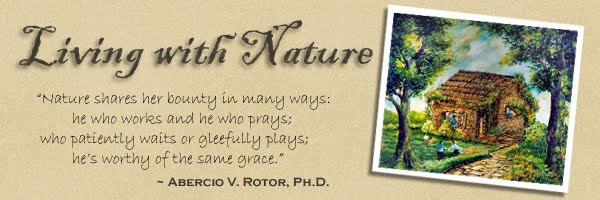




































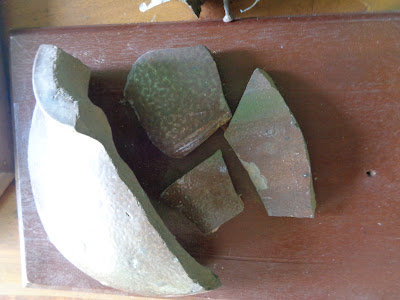
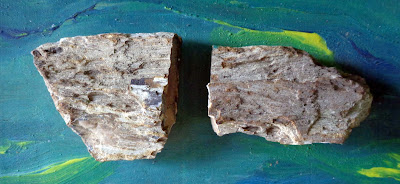






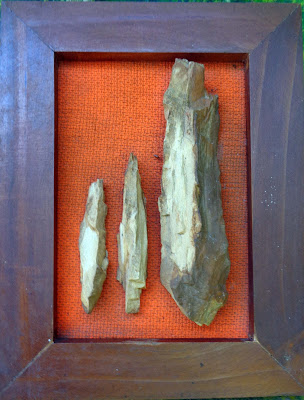








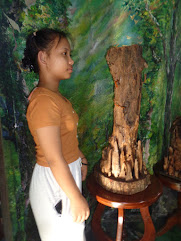







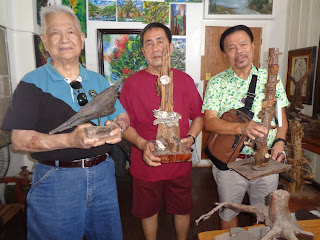













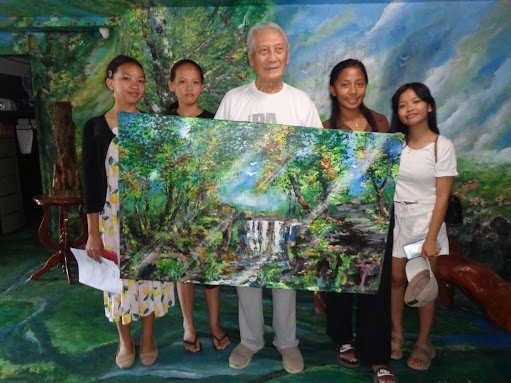





















































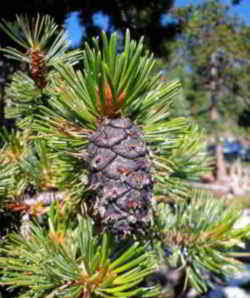



















No comments:
Post a Comment